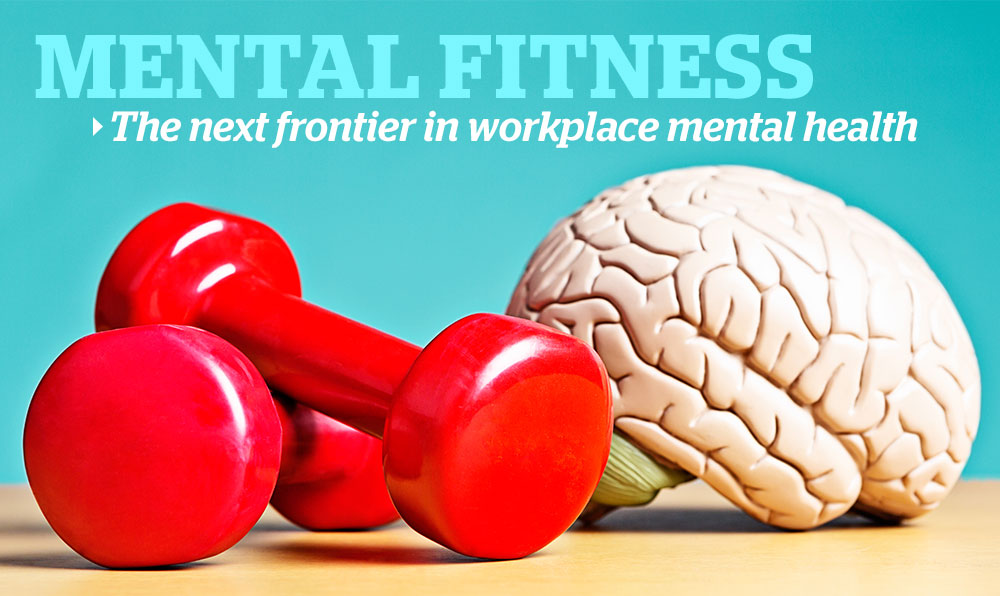

Columns/Blogs
Features
Employee Wellness
Mental Health
Why mental fitness programming design is important
By Bill Howatt

EDITOR’S NOTE: ‘Mental Fitness: The next frontier in workplace mental health’ is a weekly series, in partnership with Dr. Bill Howatt of Howatt HR Consulting in Ottawa. This series takes a deeper look at mental fitness — an approach to prevent mental harm and promote mental health.
One blind spot regarding mental health in the workplace is how mental fitness programming decisions are made.
Mental fitness and resiliency training is becoming popular as a strategy to prevent mental health concerns in the workplace. The standard approach is for an employer to pick a credible trainer and program to help employees navigate unpleasant emotions and develop their resiliency and emotional well-being.
Emotional well-being is an employee’s ability to spend more of their day in pleasant rather than unpleasant emotions.
A person’s mental fitness, resiliency, and coping ability define how they deal with unpleasant emotions. It is impossible to completely escape unpleasant emotions, as they are a part of the human experience.
Spending thousands of dollars to put a workforce through a three-hour resiliency training session and expecting it to have any lasting impact on most participants is a flawed expectation. Though an employer’s intentions may be positive, their programming logic is faulty.
There is no magic solution nor shortcut to emotional well-being. Not a lot different than improving physical health, it requires daily intention, focus and action.
Employers must shift their focus from reactive to preventive programming to positively impact employees’ well-being. They must also pay attention to whether their programming is transactional or transformational.
Transactional programming is offering a prevention program such as a three-hour resiliency training session with the flawed expectation that this one point in time will have a major impact on an employee’s emotional well-being.
It can, however, increase the level of awareness and open the minds of motivated employees to what they can do to take accountability for their emotional well-being.
The reality is most employees will not understand the application or how to apply training with new concepts provided at one point in time, regardless of the topic, considering it takes months to develop any new habit.
Transformational programs take employees through an educational process over a defined period.
For example, I would see clients for a 12-week cognitive behavioural program to deal with a mental health concern as a therapist. This allowed time for the transfer of knowledge and skills, for the client to practice and integrate concepts, and for me to provide encouragement and support along my client’s mental health journey. I know that therapy works and how effective prevention programming reduces employees’ mental illness and creates emotional well-being.
Accepting that obtaining emotional well-being is not a one-time event can help employees and employers pick transformational over transactional programming.
Psychologically Safe Workplace Awards provide employers tools, data on mental health
Why transformation programming is needed to support mental fitness
Emotional well-being has no goal line. Employers who have been supporting employees’ fitness membership year over year will benefit from the same mindset regarding emotional well-being.
Knowing that one in five employees experiences a mental illness and that many more are languishing (i.e., feeling blah and spending more time in unpleasant than pleasant emotions), I created the Mental Fitness Journey, a transformational program to help employees move from languishing to flourishing or to maintain their emotional well-being. The program helps employees create personalized mental fitness programs and supports them through a 12-month mental fitness journey.
High-level summary of the Mental Fitness Journey’s basic elements:
- Communications and program onboarding: the mental fitness journey and its benefits.
- Mental Fitness Index baseline: getting a baseline on what employers and employees can do to improve employees’ emotional well-being and psychological health and safety
- Mental fitness plan version 1.0: supporting employees to develop personalized mental fitness plans.
- Check-ins: leveraging pulse checks to hold employees and employers accountable.
- Live microskills: focused themes from baseline data that can provide additional education and re-engage and attract participation.
- Behavioural nudges: reminders to engage and participate.
- On-demand content: resources such as webinars, books, and self-discovery assessments employees can use.
A transformational program has a clear beginning, middle, and end and uses metrics to evaluate progress.
It is critical for a successful mental health program to be realistic, and for participants to understand its purpose.
The Mental Fitness Journey provides employees with a framework to facilitate their emotional well-being through content, tools, and support to positively impact their mental health.
 Dr. Bill Howatt is the Ottawa-based president of Howatt HR Consulting.
Dr. Bill Howatt is the Ottawa-based president of Howatt HR Consulting.
If there is a particular microskill or topic you would like to see Dr. Howatt write on that supports employees’ mental health in the workplace, please send your request to Talent Canada editor Marcel Vander Wier.
Print this page